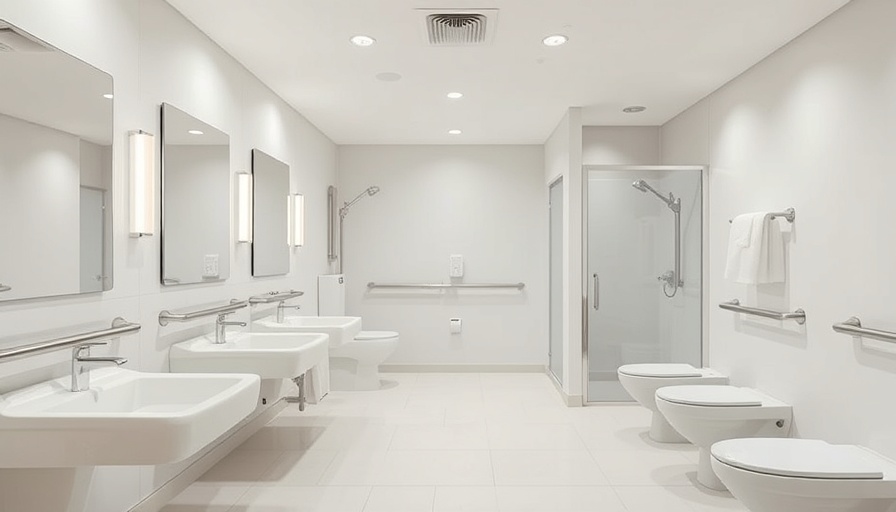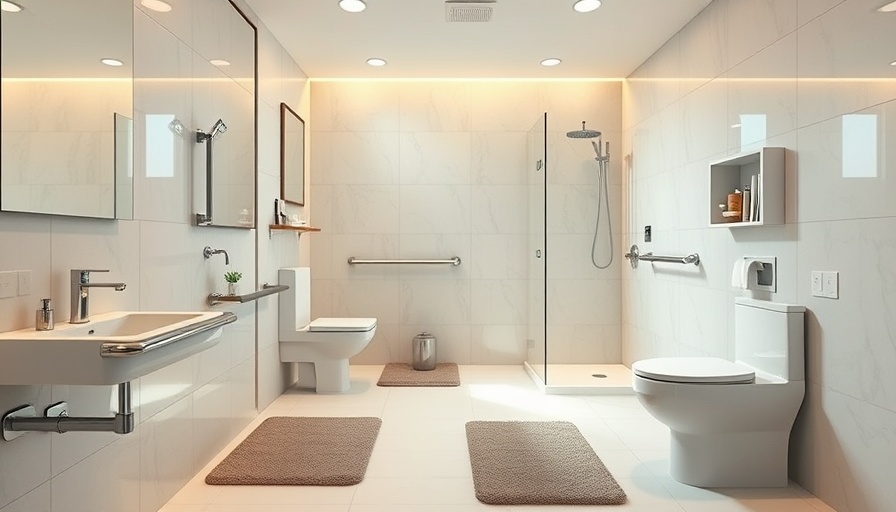
Navigating ADA Compliance in Toms River
For homeowners and businesses in Toms River, embracing the guidelines set forth by the Americans with Disabilities Act (ADA) is not just a regulatory necessity; it's a vital aspect of community inclusivity. Understanding the principles of ADA compliance can initially seem overwhelming, but it opens the door to creating spaces that are usable and welcoming for everyone. This guide intends to simplify the journey toward ADA-compliant bathroom solutions, enabling you to make informed decisions that enhance safety and accessibility.
Understanding ADA Compliance: Key Elements
The ADA provides a framework for ensuring that public and private spaces accommodate individuals with disabilities. Specific guidelines exist regarding bathroom accessibility, including door widths, fixture heights, and the installation of grab bars. For instance, to facilitate movement for those in wheelchairs, doorways must span at least 32 inches. The correct height for ADA-compliant toilets is between 17 to 19 inches, ensuring that individuals with mobility impairments can use them comfortably. Awareness of these standards is crucial, especially when considering local regulations that may impose additional requirements. Collaborating with specialists in ADA renovations can help ensure compliance while also tapping into local resources for best practices.
Steps to Assessing Your Bathroom
Before embarking on renovations, a thorough assessment of the current conditions in your bathroom is essential. Start with measuring the door widths to ensure they meet the necessary requirements. The turning radii and proximity of bathroom fixtures are integral factors in making the bathroom navigable. Make it a point to measure floor space as well; the ADA recommends sufficient maneuvering room for individuals using mobility aids. Moreover, inspect existing fixtures like sinks and toilets to determine their heights and placements. Only by identifying these aspects can you appropriately plan for modifications that meet ADA standards without compromising style.
Essential Features of an ADA-Compliant Bathroom
Incorporating the right features transforms a standard bathroom into an ADA-compliant sanctuary. Begin by installing grab bars, which are critical for providing stability. Ideal heights for grab bars range from 33 to 36 inches above the floor level, strategically placed near toilets and showers. Next, ensure the toilet's height is within the accessible range of 16 to 18 inches. When selecting a sink, prioritize models that allow for knee clearance underneath, permitting easy access for wheelchair users.
If space allows, consider installing a zero-threshold shower, which removes barriers and enhances mobility. It’s also imperative that all controls and fixtures are positioned within reach, enabling users to operate them comfortably.
Enhancing Safety with Additional Bathroom Modifications
Beyond basic ADA compliance, consider implementing further modifications for enhanced safety. Non-slip flooring is essential in preventing falls, especially in wet areas. Lighting also plays a crucial role; bright, well-placed lights reduce shadows and improve visibility for all users, making navigation easier and safer.
In addition to these physical modifications, consider the benefits of smart technology. Voice-activated devices can enhance the bathroom experience, allowing users with limited mobility to operate lights, music, or heating elements without physical exertion.
Embracing Community Resources for ADA Compliance
In Toms River, numerous local resources are available to assist homeowners in making ADA-compliant modifications. Connecting with non-profits focused on accessibility can yield valuable information as well as funding and support opportunities. Furthermore, local contractors who specialize in ADA renovations offer insights that can simplify the process and assure that all modifications are within compliance.
By being proactive and leveraging community resources, you underscore your commitment to inclusivity while fostering a bathroom environment that prioritizes safety and comfort for all users.
Final Thoughts and Call to Action
Creating an ADA-compliant bathroom is not merely about meeting legal standards; it is about making meaningful changes that enhance accessibility for individuals with disabilities. Equipping your bathroom to be both functional and accessible opens up opportunities for all family members and guests to feel welcomed.
As you embark on your renovation journey, take the time to plan, assess, and utilize available resources in Toms River. For assistance in navigating this process, consider consulting with experts in ADA compliance who can guide you through the intricacies of creating safe and inclusive spaces.
Let’s work together toward a more accessible future in Toms River. Don’t hesitate to reach out for more information on bathroom safety solutions tailored to your needs!
 Add Row
Add Row  Add
Add 




 Add Row
Add Row  Add
Add 

Write A Comment